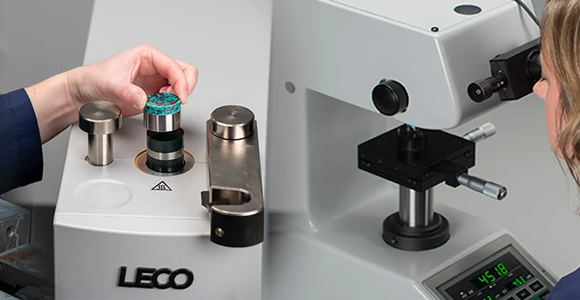LECO highlights metallographic preparation process
November 25, 2020

LECO, a global provider of analytical equipment and services headquartered in St. Joseph, Michigan, USA, has published a series of pre-recorded webinars that highlight key considerations for successful material analysis. Included in the webinars is a presentation on the metallographic preparation and analysis of carburised steel, along with an overview of the process.
To accurately perform metallographic analysis of a sample, explains LECO, its preparation is critical. The microstructure and hardness of the sample have to be identified, and the analyser has to be able to trust that what they are seeing is what is actually there, and not just something inadvertently created in the preparation stages.
LECO states that proper metallographic preparation of a sample such as carburised steel has five or six steps, depending on the type of analysis required. The steps include:
- Sectioning – to provide a workable cross-section exposing the area to be analysed
- Mounting – where the sample is secured in an appropriate mounting material that allows for sharp edge retention and will grind away at the same rate as the sample in future preparation steps
- Grinding – to create a flat and even surface
- Polishing – to remove the deeper scratches left by the rougher grinding abrasives
- Etching – if analysing the microstructure of your sample this is done immediately after polishing, to prevent oxidation
Dave Coulston, LECO’s Corporate Metallurgist, explains that the etching stage is best performed in several smaller steps. He noted, “You can’t unbake a cake. If you over-etch a sample, there is no going back.”
Whether or not a sample is etched, states the company, the metallographic analysis is the final step. Through hardness testing or microscopic image analysis, more of the makeup of a sample can be revealed.
Coulston explains the metallographic preparation and analysis process in more detail in these webinars on steel analysis.
















